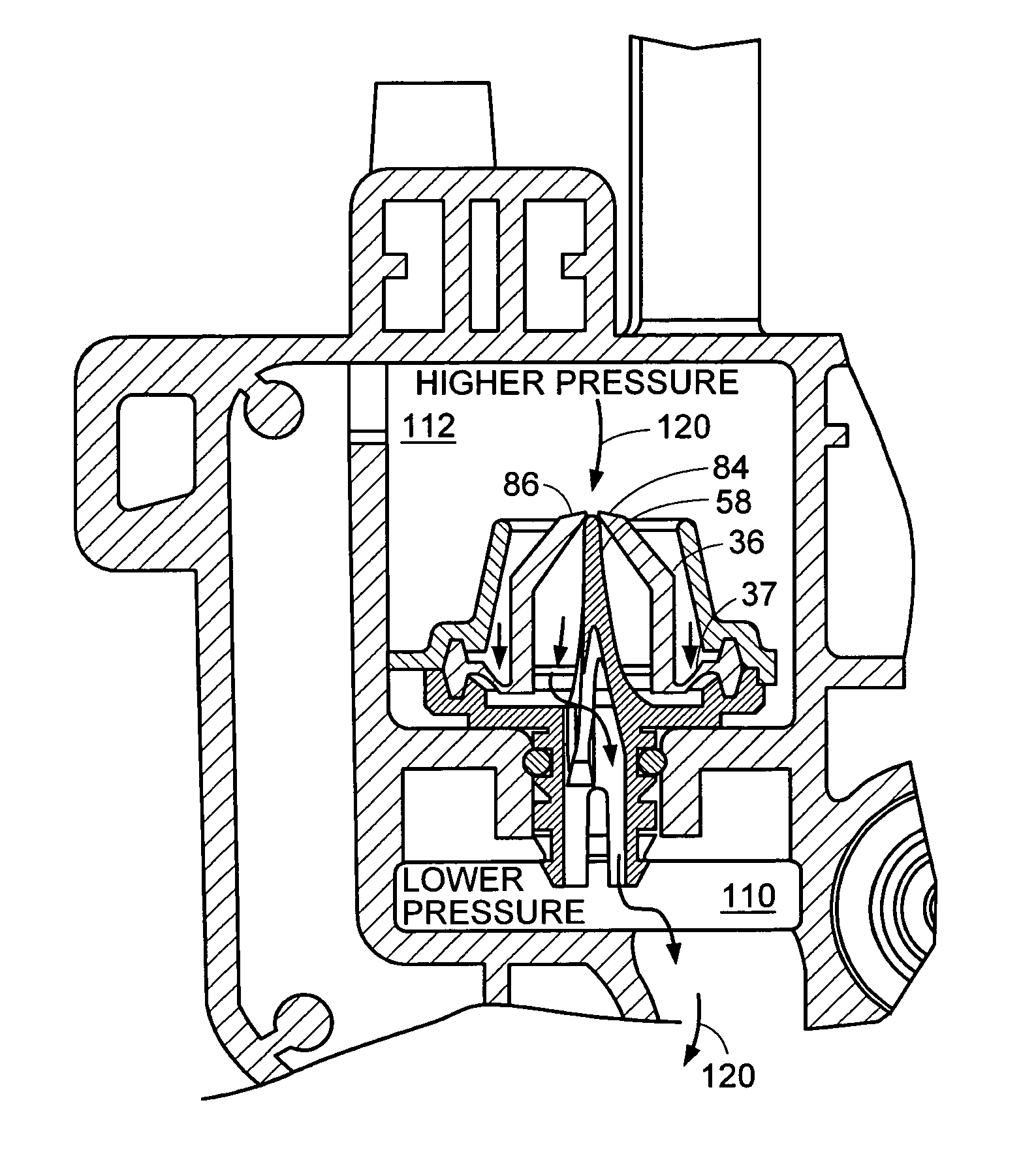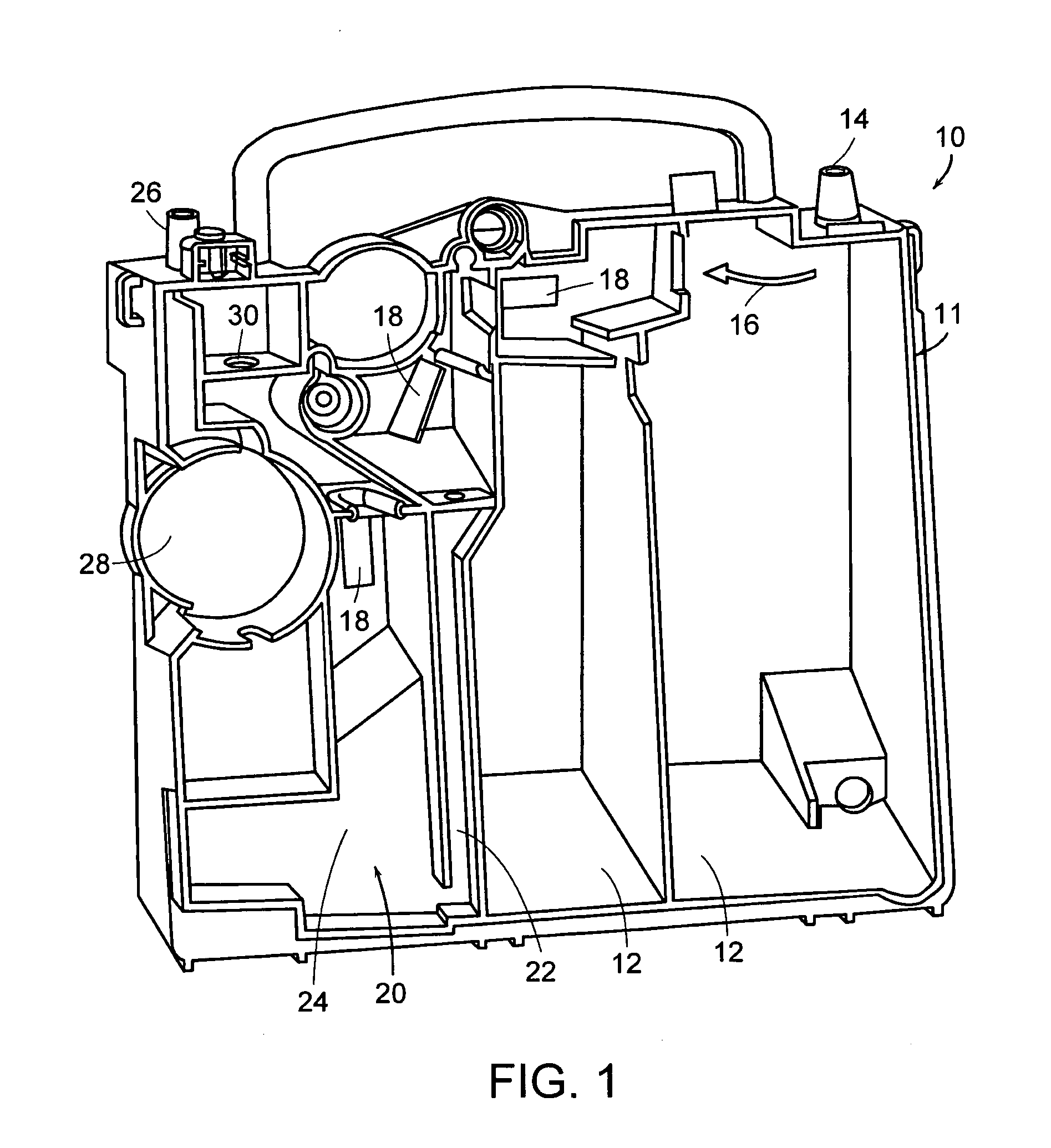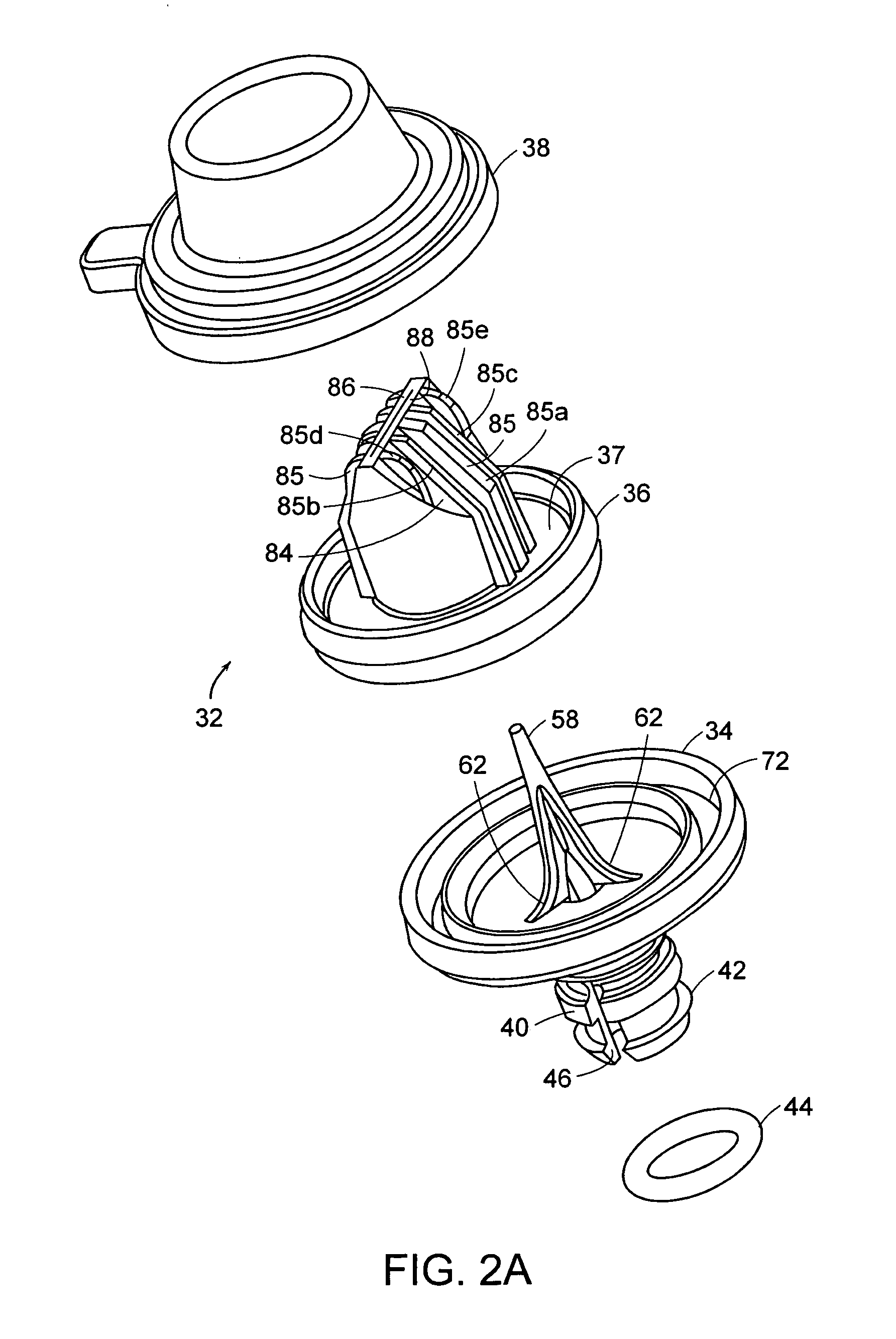Valve for use with chest drainage system
a valve and chest technology, applied in the field of valves, can solve the problems of abnormal positive pressure in the pleural space and can be very dangerous
- Summary
- Abstract
- Description
- Claims
- Application Information
AI Technical Summary
Benefits of technology
Problems solved by technology
Method used
Image
Examples
Embodiment Construction
[0024] The description of the inventive valve is in the context of a chest drainage device. Of course, the valve may be used in other medical and non-medical fields which require similar functionality. As used in this application the term “pressure” refers to gauge pressure, that is ambient air pressure will be at 0.0 cm of water. Pressure above ambient air pressure will be positive and pressures below ambient are negative. Pressure differences are generally referred to as positive pressure differences when going from the upstream side to the downstream side, unless otherwise indicated. That is, a positive pressure difference of, for example, 2 cm of water will open the valve and allow air to flow from the upstream side to the downstream side. A negative pressure difference could occur if the downstream side has a higher pressure than the upstream location. As an example, a downstream pressure of atmospheric pressure and a −8 cm of water pressure in the upstream location would be te...
PUM
 Login to View More
Login to View More Abstract
Description
Claims
Application Information
 Login to View More
Login to View More - R&D
- Intellectual Property
- Life Sciences
- Materials
- Tech Scout
- Unparalleled Data Quality
- Higher Quality Content
- 60% Fewer Hallucinations
Browse by: Latest US Patents, China's latest patents, Technical Efficacy Thesaurus, Application Domain, Technology Topic, Popular Technical Reports.
© 2025 PatSnap. All rights reserved.Legal|Privacy policy|Modern Slavery Act Transparency Statement|Sitemap|About US| Contact US: help@patsnap.com



